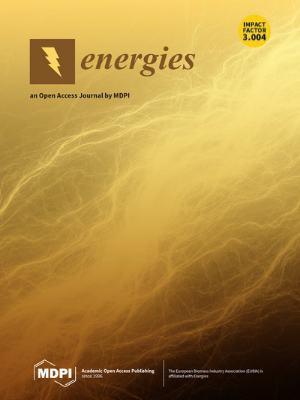锂离子电池充放电循环发热特性的数值研究
IF 3.2
4区 工程技术
Q3 ENERGY & FUELS
引用次数: 0
摘要
锂离子电池是新型能源汽车的支柱,最终将有助于建立更加可持续和环保的交通系统。本研究以 5 Ah 三元锂离子电池为例,通过 COMSOL Multiphysics 6.0 建立了二维轴对称电化学-热耦合模型,并通过实验数据进行了验证。数值研究了 26650 块三元锂离子电池在充放电循环过程中不同类型发热的比例。此外,还分别分析了充放电倍率和环境温度等基本因素对反应热、欧姆热和极化热的影响。数值结果表明,在单个电池的充放电循环中,恒定放电过程产生的总热量最高。在 2 C 倍率放电时,单位体积产生的最大热量为 67,446.99 W/m3。此外,极化热在充放电循环中所占比例最高,在 0 C 和 1 C 倍率放电时高达 58.18%。在高倍率放电中,随着放电倍率从 0.5 C 升至 2 C,反应热的比例从 34.31% 降至 12.39%。随着放电倍率的升高和环境温度的降低,单芯电池的最大温升也随之升高,其影响比放电倍率的升高更为明显。本文章由计算机程序翻译,如有差异,请以英文原文为准。
Numerical Study on Heat Generation Characteristics of Charge and Discharge Cycle of the Lithium-Ion Battery
Lithium-ion batteries are the backbone of novel energy vehicles and ultimately contribute to a more sustainable and environmentally friendly transportation system. Taking a 5 Ah ternary lithium-ion battery as an example, a two-dimensional axisymmetric electrochemical–thermal coupling model is developed via COMSOL Multiphysics 6.0 in this study and then is validated with the experimental data. The proportion of different types of heat generation in a 26,650 ternary lithium-ion battery during the charge/discharge cycle is investigated numerically. Moreover, the impact of essential factors such as charge/discharge multiplier and ambient temperature on the reaction heat, ohmic heat, and polarization heat are analyzed separately. The numerical results indicate that the total heat generated by the constant discharge process is the highest in the charging and discharging cycle of a single battery. The maximum heat production per unit volume is 67,446.99 W/m3 at 2 C multiplier discharge. Furthermore, the polarization heat presents the highest percentage in the charge/discharge cycle, reaching up to 58.18% at 0 C and 1 C multiplier discharge. In a high-rate discharge, the proportion of the reaction heat decreases from 34.31% to 12.39% as the discharge rate increases from 0.5 C to 2 C. As the discharge rate rises and the ambient temperature falls, the maximum temperature increase of the single-cell battery also rises, with a more pronounced impact compared to increasing the discharge rate.
求助全文
通过发布文献求助,成功后即可免费获取论文全文。
去求助
来源期刊

Energies
ENERGY & FUELS-
CiteScore
6.20
自引率
21.90%
发文量
8045
审稿时长
1.9 months
期刊介绍:
Energies (ISSN 1996-1073) is an open access journal of related scientific research, technology development and policy and management studies. It publishes reviews, regular research papers, and communications. Our aim is to encourage scientists to publish their experimental and theoretical results in as much detail as possible. There is no restriction on the length of the papers. The full experimental details must be provided so that the results can be reproduced.
 求助内容:
求助内容: 应助结果提醒方式:
应助结果提醒方式:


